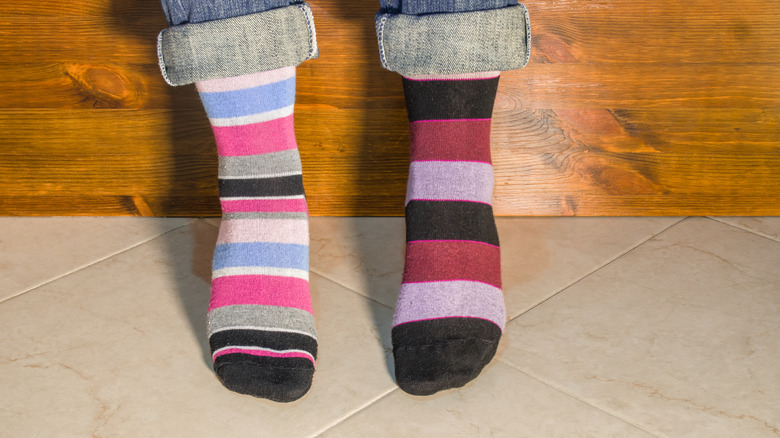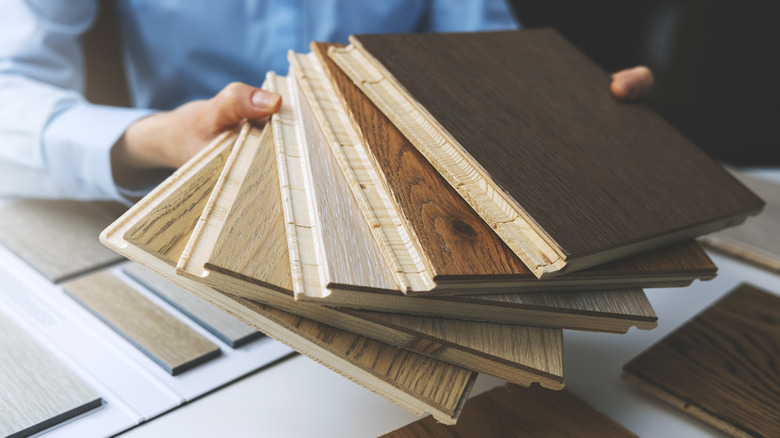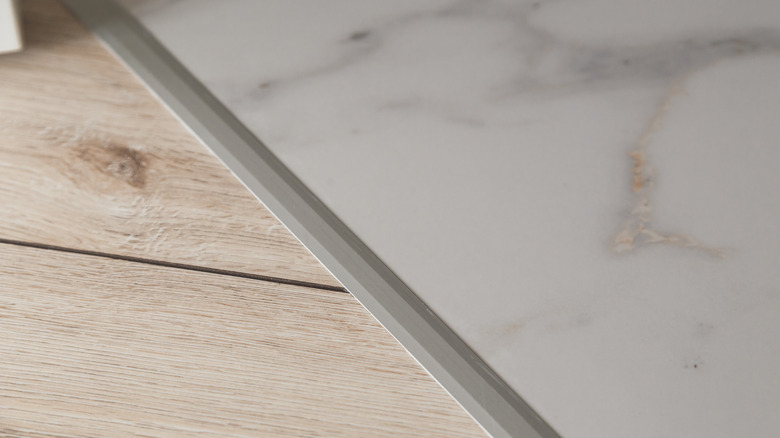Why Your Mismatched Flooring Is Making Your Space Look Cheap
Though focal points like fireplaces or decorated kitchen islands may draw your eye, flooring has an enormous overall impact on the look and feel of a room. As Garrison Collection outlines, it provides the foundation of your entire design and is crucial to get right regardless of what overall aesthetic you're going for.
Even if you've decorated your space to perfection, you need some degree of consistency with your flooring. If you have five different types of materials within one level of your home, you risk your house looking cheap — or just looking off, like you've made a big design mistake. For example, as Schumacher Homes explains, even using two different types of the same kind of flooring material within the same room can be a bit off-putting aesthetically.
Things can also get a bit complicated because, in addition to being a design feature, you also must keep functionality in mind. This means that you may have different requirements for different areas in your house. For example, many prefer hardwood in most of their space, with carpet reserved for areas like bedrooms. Likewise, tile or stone is usually utilized in rooms such as bathrooms and kitchens. Read on to learn how to best utilize flooring in your space to give your entire home a cohesive appeal.
How to mix your flooring the right way
No one is saying you must commit to one type of flooring for a high-end-looking home. However, there are a few things to keep in mind when navigating how you're going to match different styles and materials.
First, think about what really works for your house, then limit yourself to just a couple of flooring materials, styles, or colors. Also, ensure that no more than two types are touching at any one point (via 50 Floor). Of course, there are practical considerations to make as well. For example, pairing a hardwood floor with a thick shag carpet may create a bit of a stumbling hazard (not to mention an eyesore). Additionally, as Marmol advises, you want to consider the colors you're using — contrasting dark and pale colors will likely clash when placed alongside one another. Instead, search for options with similar undertones.
Once you've narrowed down the types of colors and materials you want to use, maintain a luxe and cohesive look by switching the flooring in areas that make sense. For example, you don't want to mix it up in the middle of a space, even if it's a large one. Instead, the transition from one type of flooring to another should occur between rooms, or areas where the spaces naturally seem distinct.
Other important considerations
When it comes to mixing flooring, note that the size of your home also matters. For instance, if you have a small home, you may want to reconsider just how many types of flooring you're using. Too much mixing can create a lot of visual clutter and make the space look cheap while utilizing one style can create a more seamless look and make a home appear larger (via Floor Factors).
Also, make sure you're considering the overall aesthetic you want to achieve in your house. As HomelyVille notes, certain types of flooring have a particular feel, with stone lending itself to a more rustic vibe and wood complementing more traditional or historic properties. Some crowd-pleasing options, like classic hardwoods or vinyl hardwood, will work in various spaces. Suppose you have your eye on ultra-modern slate tiles, for example, but your home's architecture is very particular to one period. In that case, you should consider how your choice will fit your abode's existing aesthetics.
If you keep some of these rules of thumb in mind when selecting different types of flooring for your house, you should be able to create a space that still looks visually cohesive, aesthetically pleasing, and luxurious. However, prepare to be more mindful when working with various materials and styles.


